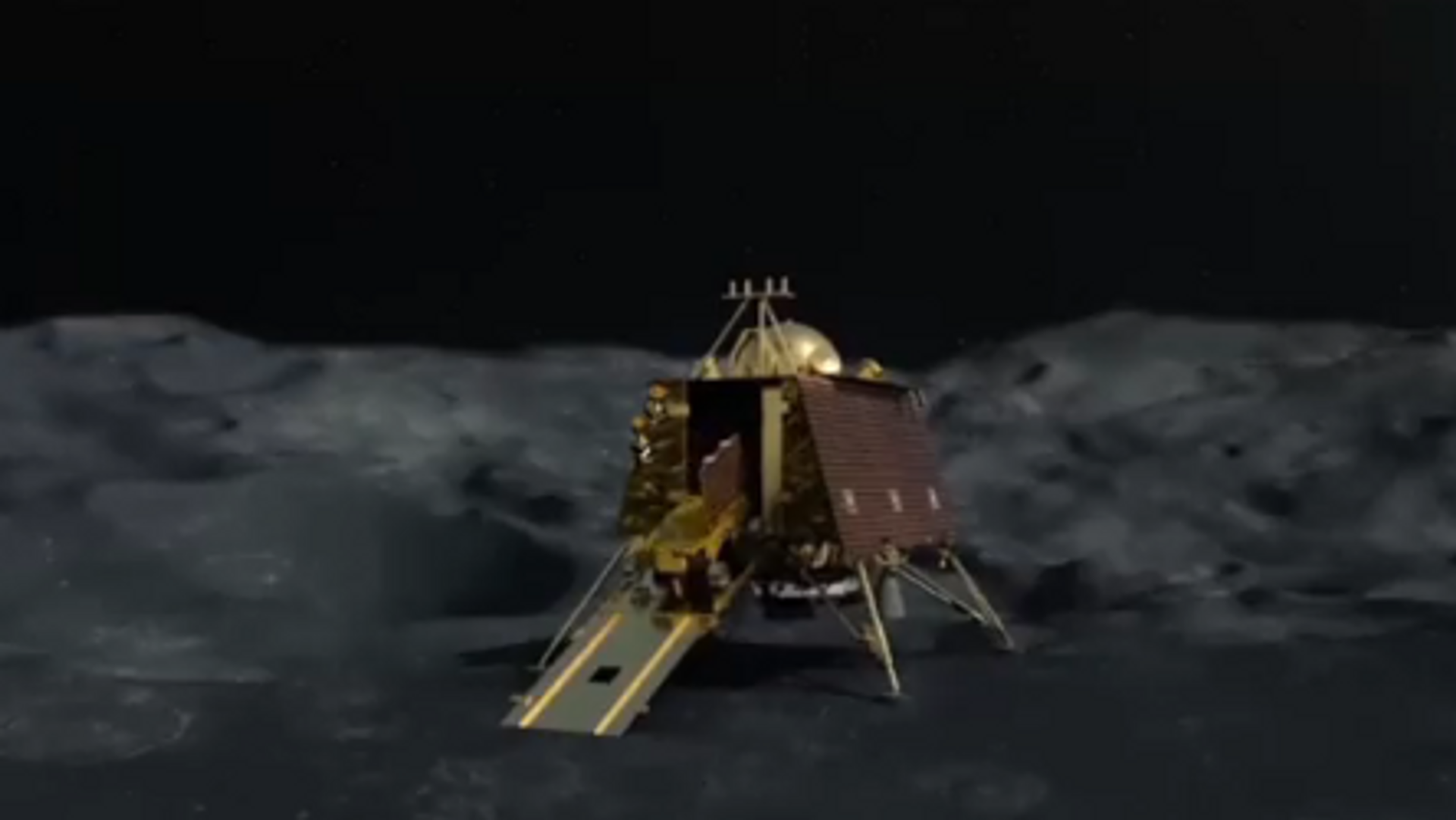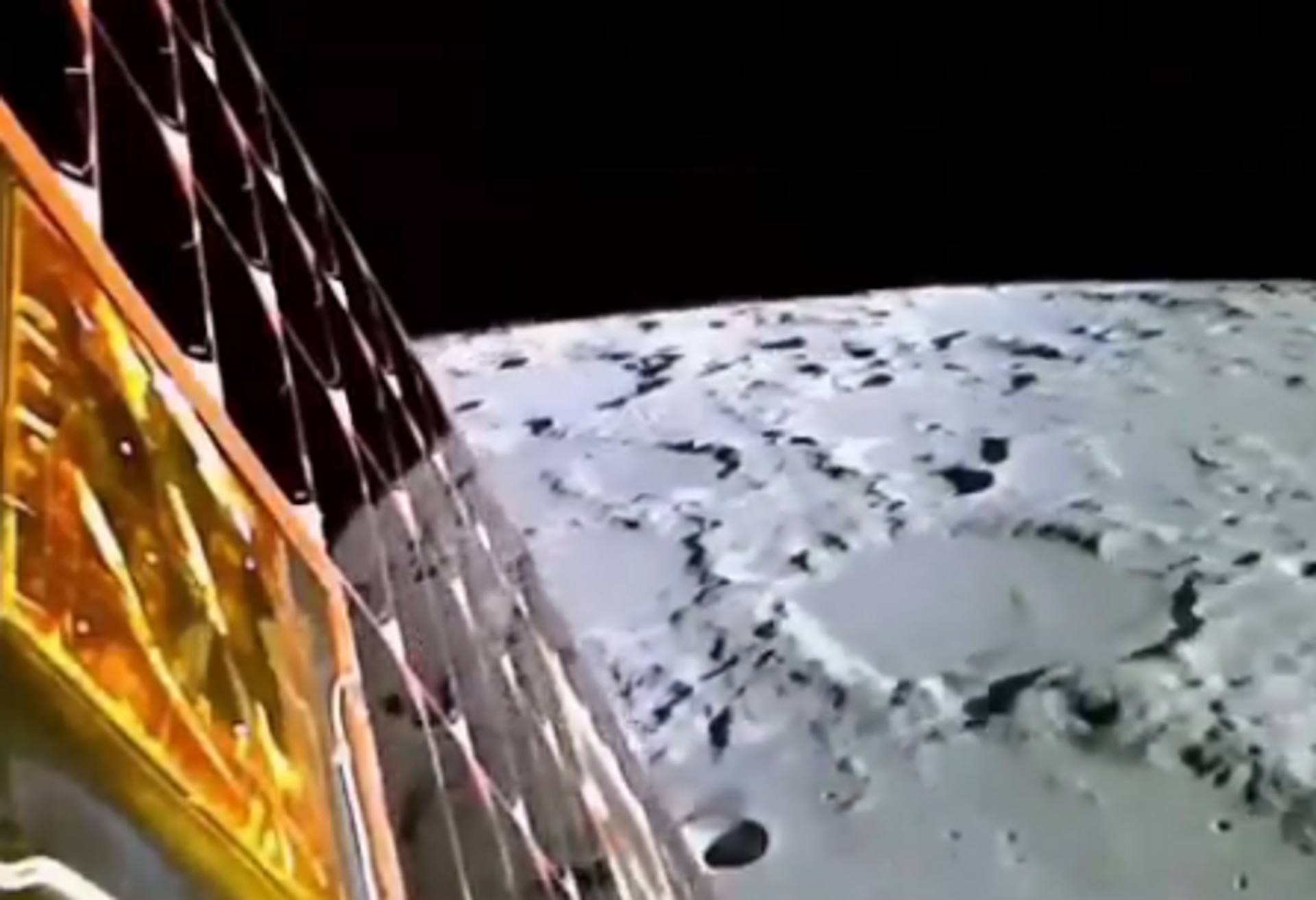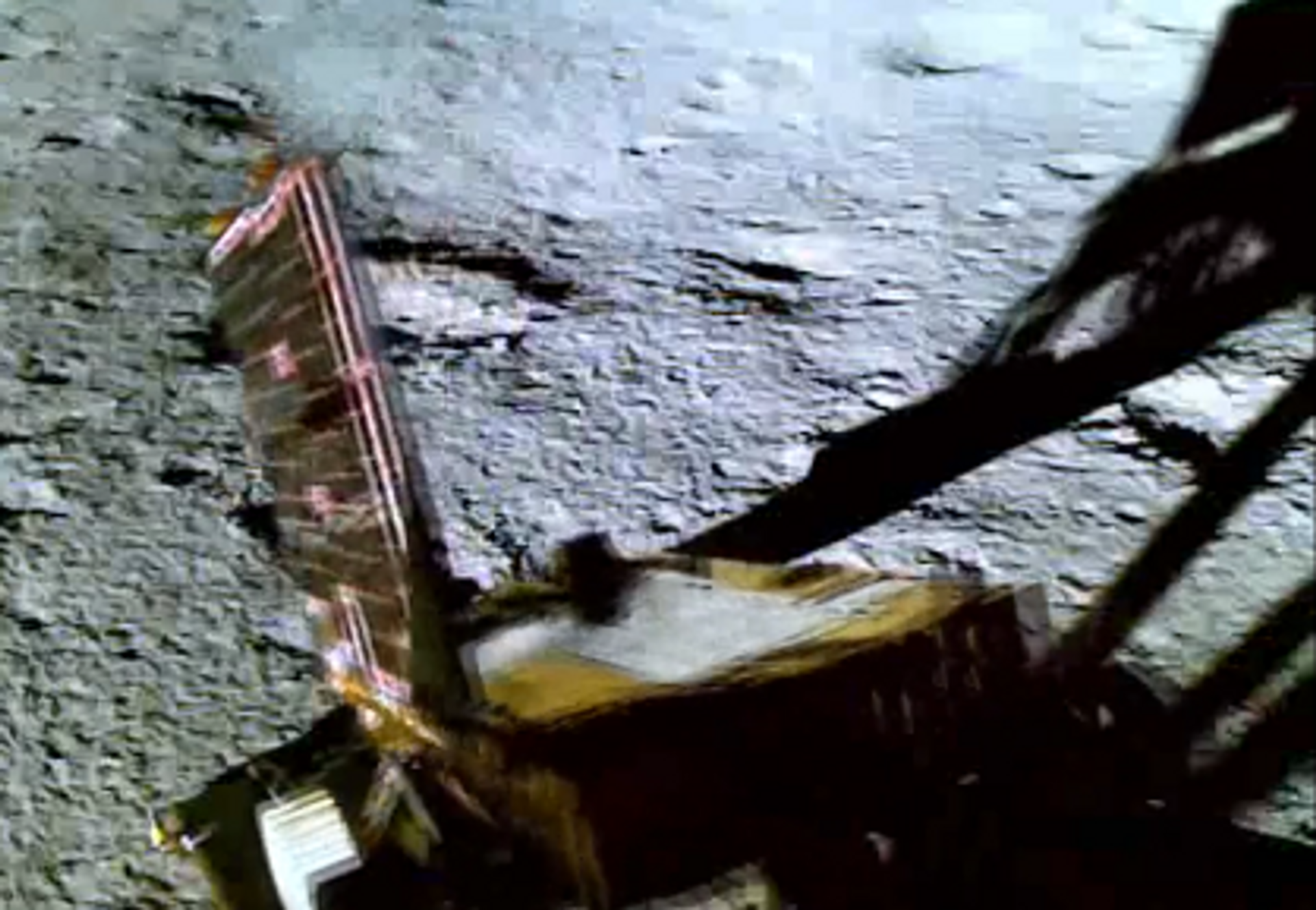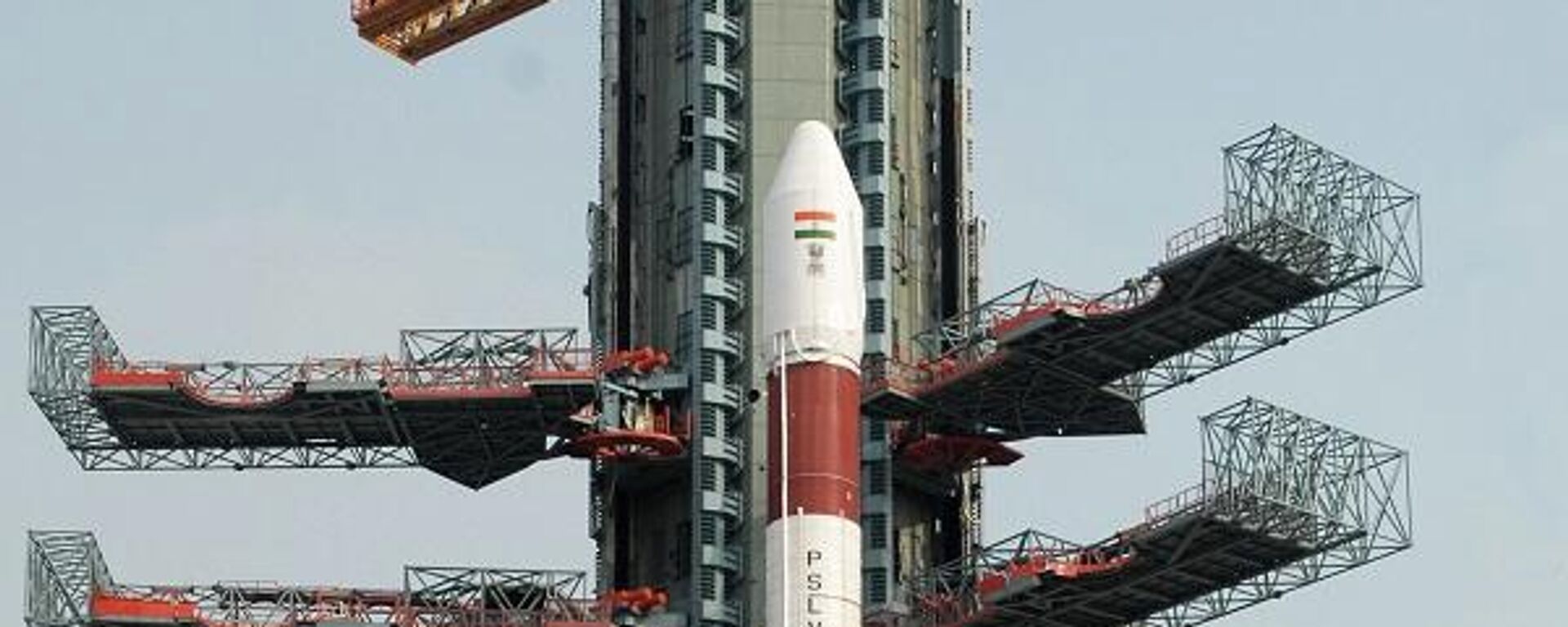https://sputniknews.in/20230904/india-puts-chandrayaan-moon-rover-to-sleep-whats-next-4022528.html
India Puts Chandrayaan Moon Rover to Sleep, What's Next?
India Puts Chandrayaan Moon Rover to Sleep, What's Next?
Sputnik India
Chandrayaan-3 has successfully achieved its mission objectives and completed a "hop experiment," said the Indian Space Research Organization (ISRO) on Monday.
2023-09-04T19:32+0530
2023-09-04T19:32+0530
2023-09-04T19:44+0530
science & tech
india
indian space research organisation (isro)
moon
moon mission
moon landing
chandrayaan
space satellite
space industry
space exploration
https://cdn1.img.sputniknews.in/img/07e7/08/18/3799078_48:0:492:250_1920x0_80_0_0_23085168ea931a24a1384dbaf39ff63f.png
The Chandrayaan-3 has successfully accomplished its mission objectives and completed a "hop experiment," the Indian Space Research Organisation (ISRO) stated on Monday. It also said that the Chandrayaan-3’s lander made a soft landing again on the lunar surface.India Puts Chandrayaan's Rover to SleepThe ISRO on Sunday said the Pragyan rover from the Chandrayaan-3 spacecraft had been "set into sleep mode", but with batteries charged and the receiver on.The lander will now be checked on 22 September to see if it’s working or not at the next sunrise on the Moon.It takes about two days for the lander to go into sleep mode, ISRO chief S. Somanath stated earlier.The Chandrayaan-3 module, which landed on the Moon’s south pole on 23 August, was originally tasked with 14 days of exploration on the lunar surface, and its rover travelled over 100 metres in two weeks.Explaining the sleeping mode of the Chandrayaan-3 mission, Project Director P. Veeramuthuvel said, "Although the mission life is 14 earth days (one day of sunlight on the moon), all of them cannot be utilized".During lunar nights, the temperature at the south pole goes down to minus 150 degrees Celsius, hence the ISRO is not sure if the system will work after the lunar night is complete.Veeramuthuvel said Chandrayaan has achieved its objective and even exceeded expectations.What Has Chandrayaan-3 Achieved So Far? The Indian Space Agency has confirmed that sulphur, oxygen aluminium, iron, calcium, chromium, titanium, manganese, and silicon have been detected in measurements at the south pole of the Moon.The measurements were made by the Laser-Induced Breakdown Spectroscopy (LIBS) instrument on board the Chandrayaan-3's Moon rover, Pragyan.The Vikram lander reportedly also captured a notable seismic event on 26 August.
https://sputniknews.in/20230902/pslv-rocket-30-years-old-and-still-going-strong-3991235.html
india
moon
Sputnik India
feedback.hindi@sputniknews.com
+74956456601
MIA „Rossiya Segodnya“
2023
Deexa Khanduri
https://cdn1.img.sputniknews.in/img/07e6/0c/13/138923_52:0:533:481_100x100_80_0_0_cadf23d341691fc65ff2b22fd1afe584.jpg
Deexa Khanduri
https://cdn1.img.sputniknews.in/img/07e6/0c/13/138923_52:0:533:481_100x100_80_0_0_cadf23d341691fc65ff2b22fd1afe584.jpg
News
en_IN
Sputnik India
feedback.hindi@sputniknews.com
+74956456601
MIA „Rossiya Segodnya“
Sputnik India
feedback.hindi@sputniknews.com
+74956456601
MIA „Rossiya Segodnya“
Deexa Khanduri
https://cdn1.img.sputniknews.in/img/07e6/0c/13/138923_52:0:533:481_100x100_80_0_0_cadf23d341691fc65ff2b22fd1afe584.jpg
chandrayaan 3, chandrayaan 3 launch date, chandrayaan, chandrayaan-3, chandrayaan-3 launch date, chandrayaan 3 upsc, photos of chandrayaan, india moon mission, india's moon mission, moon mission, pragyan rover, what is vikram lander and pragyan rover, what chandrayaan will do on moon, is chandrayaan sucessful, vikram moon rover, चंद्रयान-3
chandrayaan 3, chandrayaan 3 launch date, chandrayaan, chandrayaan-3, chandrayaan-3 launch date, chandrayaan 3 upsc, photos of chandrayaan, india moon mission, india's moon mission, moon mission, pragyan rover, what is vikram lander and pragyan rover, what chandrayaan will do on moon, is chandrayaan sucessful, vikram moon rover, चंद्रयान-3
India Puts Chandrayaan Moon Rover to Sleep, What's Next?
19:32 04.09.2023 (Updated: 19:44 04.09.2023) Deexa Khanduri
Sputnik correspondent
India’s Pragyan Moon rover explored the south pole of the Earth’s natural satellite for two weeks, equivalent to one lunar day. On Sunday, the module was put in sleep mode.
The Chandrayaan-3 has successfully accomplished its mission objectives and completed a "hop experiment," the Indian Space Research Organisation (ISRO) stated on Monday. It also said that the Chandrayaan-3’s lander made a soft landing again on the lunar surface.
"Vikram Lander exceeded its mission objectives. It successfully underwent a hop experiment. On command, it fired the engines, elevated itself by about 40 cm as expected, and landed safely at a distance of 30–40 cm away", the ISRO tweeted.
India Puts Chandrayaan's Rover to Sleep
The ISRO on Sunday said the Pragyan rover from the Chandrayaan-3 spacecraft had been "set into sleep mode", but with batteries charged and the receiver on.
"Hoping for a
successful awakening for another set of assignments!" the ISRO wrote, adding, "Else, it will forever stay there as India's lunar ambassador".
The lander will now be checked on 22 September to see if it’s working or not at the next sunrise on the Moon.
It takes about two days for the lander to go into sleep mode, ISRO chief S. Somanath stated earlier.
The Chandrayaan-3 module, which landed on the Moon’s south pole on 23 August, was originally tasked with 14 days of exploration on the lunar surface, and its rover travelled over 100 metres in two weeks.
Explaining the sleeping mode of the
Chandrayaan-3 mission,
Project Director P. Veeramuthuvel said, "Although the mission life is 14 earth days (one day of sunlight on the moon), all of them cannot be utilized".
"We landed on the second day (of sunlight on the moon). There are 14 days of sunlight. But we cannot fully utilize these 14 days because we have to have a
sun elevation angle of six degrees. So, we cannot go till the 14th day, and we will be planning to issue the sleep command sometime tomorrow (Sunday)", Veeramuthuvel said.
During lunar nights, the temperature at the south pole goes down to minus 150 degrees Celsius, hence the ISRO is not sure if the system will work after the lunar night is complete.
Veeramuthuvel said Chandrayaan has achieved its objective and even exceeded expectations.
What Has Chandrayaan-3 Achieved So Far?
The Indian Space Agency has confirmed that sulphur, oxygen aluminium, iron, calcium, chromium, titanium, manganese, and silicon have been detected in measurements at the south pole of the Moon.
The measurements were made by the Laser-Induced Breakdown Spectroscopy (LIBS) instrument on board the Chandrayaan-3's Moon rover, Pragyan.
The
Vikram lander reportedly also captured a notable
seismic event on 26 August.





